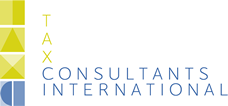On 18 December 2018, the Dutch Senate adopted the tax plan for 2019, making the tax changes per 1 January 2019 final.
As per 1 January 2019, the following changes of the Dutch corporate income tax regime have become effective:
- No abolishment dividend withholding tax
- Reduction the Dutch corporate income tax rate
- Limitation loss carry forward period
- Abolishment of the restriction for the offset of tax losses by Dutch holding companies
- Introduction earnings stripping rule (general limitation interest deduction)
- Introduction CFC- rules (recognition non-distributed passive income of controlled foreign subsidiaries)
- Restriction tax depreciation of buildings in own use
- Abolishment interest deduction for Tier 1 capital instruments (AT1, CoCo bonds)
- Exit tax sharpened
This is a list of the main tax changes of the Dutch corporate income tax regime per 1 January 2019, but it is not meant to be comprehensive. Please consult your Dutch tax advisor to clarify the impact of the changes on the Dutch tax position of your company. Alternatively, we would ofcourse also be gladly prepared to advice you on the consequences of the new rules.
No abolishment dividend withholding tax
On 18 September 2018 the Dutch Government presented the 2019 Budget Proposals including the Tax Plan 2019, which included some quite extraordinary amendments of Dutch tax laws, including the proposal to abolish the Dutch dividend withholding tax, with a simultaneous introduction of an conditional withholding tax for dividends (as form 2020), interest and royalties (as from 2021).
The proposal to abolish the Dutch dividend withholding tax, was subsequently heavily debated in Parliament, and ultimately the Government withdraw the plan to abolish the dividend withholding tax (and the introduction of an alternative withholding tax for dividends). The subsequent extra budget is (partly) used to facilitate an extra reduction of the Dutch corporate income tax rate (see below).
The foregoing does not change the fact that since April 2018, the Dutch Dividend Withholding Tax Act provides for an unilateral exemption at source for dividends declared to foreign corporate shareholders. Various conditions must be met for this exemption, but generally speaking foreign corporate shareholders which hold 5% or more of a Dutch corporation can qualify for this exemption, provided the general anti-abuse clause (main-purpose test) does not apply.
Reduction the Dutch corporate income tax rate
In 2019 the corporate income tax rate will be 19% (2018: 20%) on the first € 200,000 of taxable profits (2018: € 200,000) and 25% (2018: 25%) for taxable profits exceeding € 200,000.
In the next years the Dutch corporate income tax rate will be gradually be reduced as follows:
- 2020: 16.5% on profits up to € 200,000 and 22.55% on profits above € 200,000
- 2021: 15% on profits up to € 200,000 and 20.5% on profits above € 200,000
Limitation loss carry forward period
The maximum period for the carry forward of tax losses will be reduced from nine (9) to six (6) years. The term for carry back stays the same (at one year).
Losses incurred before 2019 can still be carried forward for a maximum of nine years.
Abolishment of the restriction for the offset of tax losses by Dutch holding companies
Up to and including 2018, specific limitations applied for the carry forward and carry back of tax losses by Dutch Holding Companies (and group finance companies).
Dutch Holding Companies generally have a negative tax base as a consequence of applying the participation exemption: income from shares in subsidiaries is exempt, whereas expenses (in particular interest expenses) are in essence tax deductible.
In order to avoid tax loss utilization schemes, a special restriction applied to the carry forward of tax losses by Dutch Holding Companies.
Tax losses incurred by qualifying Dutch Holding Companies (or group financing companies) could only be offset against profits in preceding and following years if, in short, the nature and size of the activities of the company in that particular year was comparable to the nature and size of the activities in the year from which the tax losses originated (and the balance of the receivables and liabilities on related parties at the end of the financial year in which a taxable profit has arisen did not exceed the balance of such receivables and liabilities of the financial year in which the taxable loss was incurred, unless the taxpayer is able to substantiate that the change in the balance of the receivables and liabilities was not mainly motivated by intention to utilize the tax losses). In essence this rule aimed to avoid that a Dutch Holding Company started up new activities with the main purpose to monetize its tax loss position.
As per 2019 this restriction for Dutch Holding Companies (and group financing activities) has been abolished.
Introduction earnings stripping rule (general limitation interest deduction)
As per 2019 a general limitation for the tax deduction of interest expenses in the form of an soc-called “earnings stripping rule” is introduced.
This new legislation is part of the package of legislation to implement the first EU Anti-Tax Avoidance Directive EU 2016/1164, generally referred to as “ATAD-1”.
The Dutch earnings stripping rule provides for a general limitation for the tax deduction of excess net interest expenses to 30% of fiscal EBITDA (i.e. the EBITDA determined on the basis of Dutch tax principles).
By the reference to the fiscal EBITDA it is achieved that the basis for calculating the non-deductible interest will not include tax exempt income, like typically the income from shares in subsidiaries which are covered by the participation exemption.
Excess interest expenses are defined as the balance of interest expenses and interest income, including exchange results.
The earnings stripping rule contains a franchise of € 1,000,000; the tax deduction of "excess" interest expenses up to and including € 1,000,000 is not restricted.
There is no grandfather rule for existing situations.
The amount of interest which is no longer tax deductible by virtue of to this measure can in essence be carried forward indefinitely i.e. deducted from future profits but only in so far the interest does not exceed the limitation provided by the Dutch earnings stripping rule in the respective year. An anti-abuse rule has been implemented for amongst others the situation of a change-of-control which may limit the carry forward possibilities.
The Dutch earnings stripping rule will be applied to standalone tax payers. However, in case of a group (i.e. Dutch fiscal unity) the rule will be applied at group level (and the fiscal unity will thus not be disregarded for purposes of this rule).
In connection with the implementation of the earnings stripping rule, the limitation for the interet deduction on excessive participation debt (article 13L CITA) as well as the limitation for the the interest deduction on excessive acquisition holding debt (article 15 ad CITA) are abolished. The general limitation for the tax deduction of interest on loans connected to "tainted" transactions (article 10A CITA) will remain in force.
Introduction CFC- rules (recognition non-distributed passive income of controlled foreign subsidiaries)
Also as a part of the implementation of ATAD 1, so-called ”CFC rules” are introduced, which aim to avoid the accumulation of passive income in controlled foreign subsidiaries which are not subject to tax or subject to a low tax.
The CFC rules will in essence apply in case a Dutch corporate taxpayer has a direct or indirect interest of more than 50 per cent in a “low-taxed” foreign subsidiary or it has a “low-taxed” permanent establishment.
An entity (or permanent establishment) is considered “low-taxed” if it is established in:
- a jurisdiction without corporate income tax or with a (statutory) corporate income tax rate lower than 9%, or;
- a jurisdiction included in the EU list of non-cooperative jurisdictions, the so called “EU Blacklist”.
The Netherlands published its owns black list on 28th December 2018 on the basis of the aforementioned two criteria.
The essence of the new Dutch CFC-rules is that when a controlled foreign subsidiary (CFC) has a substantial amount of tainted passive income (such as dividend, interest, royalties, benefits from the sale of shares, benefits from financial leasing and other financial/banking/insurance activities), this income will have to be included in the Dutch corporate taxpayer’s taxable profits.
The CFC rules do not apply if the passive income of the CFC is less than 30% of its total income, or the CFC performs an “economic activity of substance” in its country of residence. The CFC is deemed to perform an “economic activity of substance" when it can comply to a number of substance requirements which include an annual wage costs of at least € 100,000 (this amount can deviate depending on a multiplier which depends on the country in which the company is established) and having an own office space available for a period of at least 24 months.
Restriction tax depreciation of buildings in own use
The depreciation of real estate property is restricted to the extent that the book value for corporate income tax purposes should not be less than the fair market value of the property. The fair market value is derived from the so called "WOZ value" which is the periodically assessed value of real estate by the municipality in which the real estate property is located (as from 2008 this value is assessed annually; for the year 2019 the WOZ-value of 2018 is decisive). Up to and including 2018, an exception to this rule applied to real estate that is in use by the taxpayer itself; the book value of the real estate property could not be less than 50% of the real estate property's fair market value. As per 2019, this exception has been abolished. There is a grandfather rule for buildings in own use that have been depreciated less than 3 years prior to 2019.
Abolishment interest deduction for Tier 1 capital instruments (AT1, CoCo bonds)
During the banking crisis the interest on so-called additional Tier-1 capital instruments (contingent convertibles, or COCO’s) was made tax deductible. This was a measure to support the banking sector. This measure is now reversed and the tax deductibility of such interest expenses is abolished.
Exit tax sharpened
When a Dutch corporate tax payer transfers its fiscal domicile to another country, corporate income tax is due over the difference between the fair market value of the business and its fiscal book value (exit tax). A similar rule applies to individuals. Under the 2018 law, tax payers that moved their fiscal domicile to an EU/EEA member state could opt to either pay the exit tax in 10 equal annual installments, or pay upon realization (e.g. upon -partial- sale of the business).
As from 1 January 2019 onwards, option 2 (defer until realization) is abolished, and the term for the tax payment in installments is shortened from 10 to 5 years. The tax payer may be asked to provide security for obtaining the tax payment deferral.


.png)

